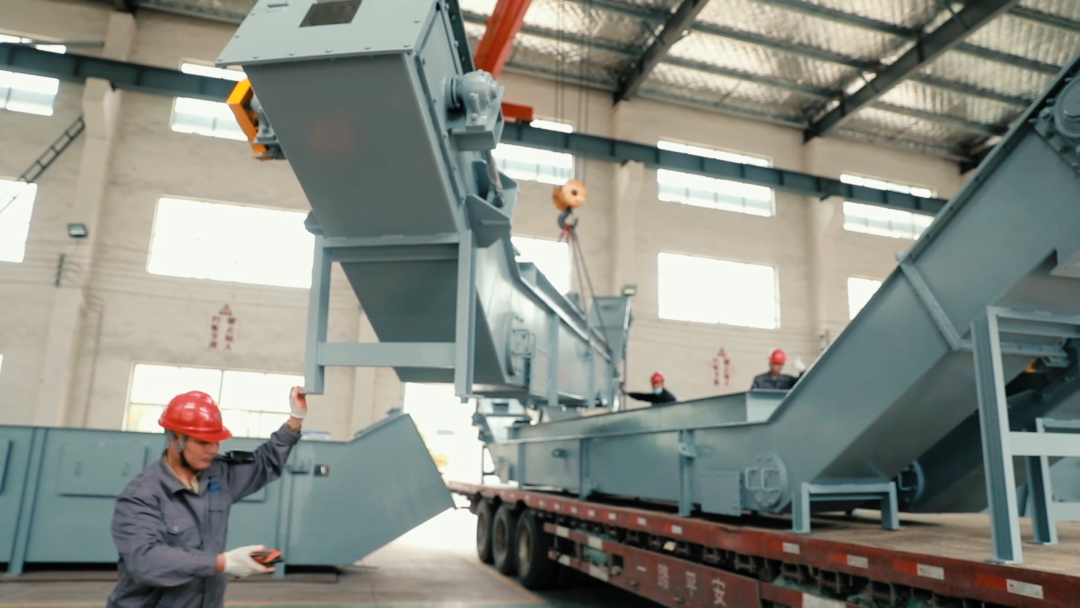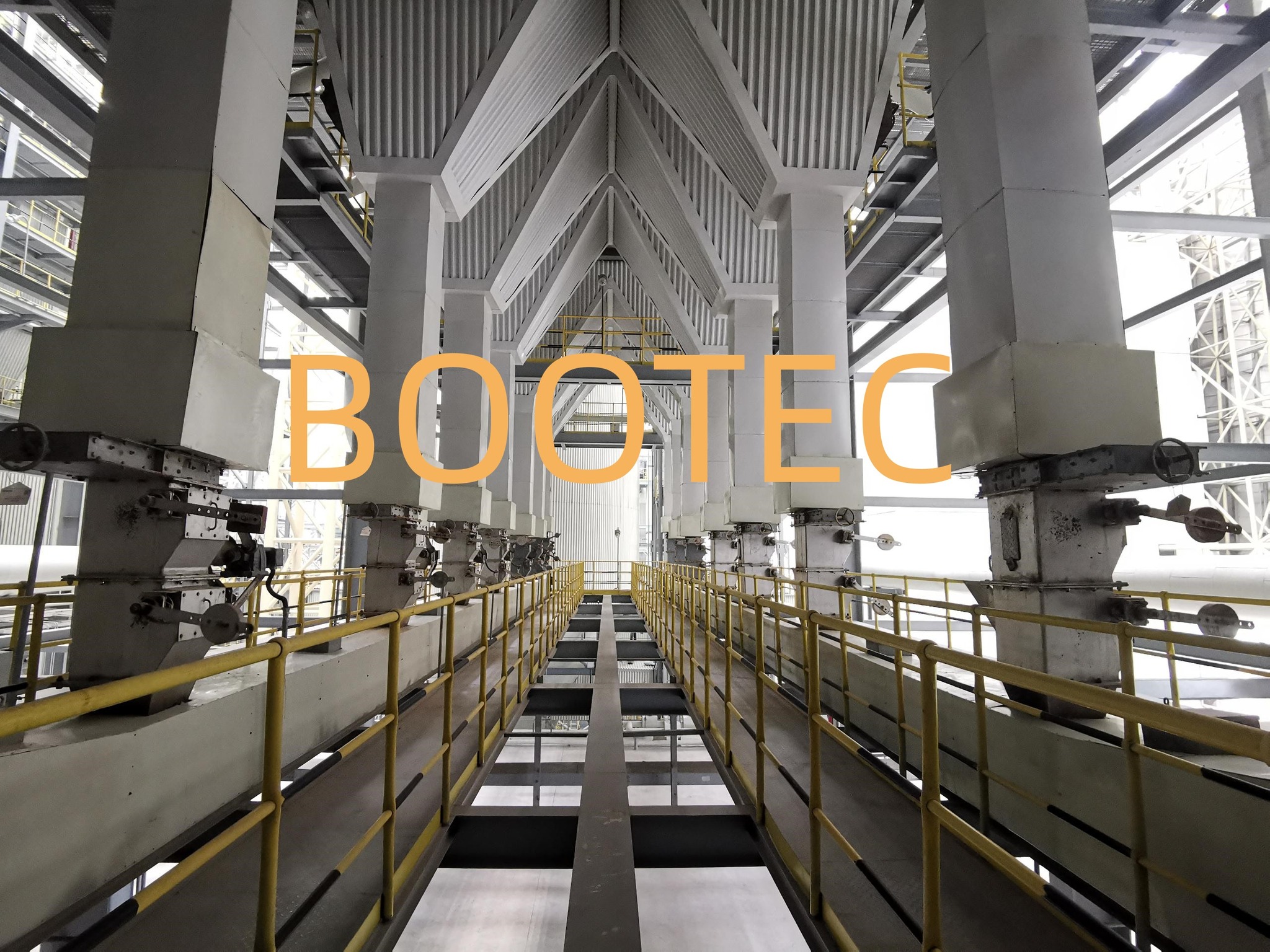
Lime Systems: Bulk Material Handling and Storage Solutions
Lime Systems: Bulk Material Handling and Storage Solutions
Lime is a key material used in a variety of industrial processes such as water treatment, flue gas desulfurization (FGD), steel manufacturing, and chemical production. The handling and storage of lime require specialized systems designed for high durability, dust control, and precise material flow management. Below is an overview of the lime bulk material handling and storage solutions, designed to optimize efficiency, safety, and operational reliability.
1. Lime Storage Solutions
Lime, whether in quicklime (CaO), hydrated lime (Ca(OH)2), or lime slurry form, must be stored effectively to prevent contamination, minimize dust generation, and ensure material quality is maintained.
- Lime Silos:
- Vertical Silos: Typically used to store quicklime or hydrated lime, lime silos are designed with aeration systems to prevent the caking or bridging of lime, ensuring it can flow freely during discharge.
- Horizontal Silos: Used for larger capacities and ideal in locations with limited vertical space, these silos can be equipped with level indicators, pressure relief valves, and safety vents to ensure smooth storage and handling.
- Material Flow Aids: Air pads, vibrators, and bin activators are incorporated to help the material discharge smoothly from the silo and avoid blockages.
- Lime Bins or Hoppers:
- Bins or hoppers are used for smaller quantities of lime and are commonly found in areas where lime is added to specific parts of the plant, such as water treatment plants or flue gas desulfurization units.
- These bins can be equipped with screw feeders, vibratory feeders, or pneumatic conveying systems to facilitate controlled material flow to other processing units.
2. Bulk Lime Transport Solutions
Effective transport systems are necessary to move lime from bulk storage to the point of use, whether it’s for industrial processes like pH adjustment, desulfurization, or chemical reactions.
- Pneumatic Conveying:
- Pneumatic conveying systems are often used to transport lime over long distances. Pneumatic systems can be configured to dilute-phase (lower pressure, faster speed) or dense-phase (higher pressure, slower speed) depending on the distance and the nature of the material.
- Enclosed Systems: Pneumatic conveyors can be designed to fully enclose the lime during transport, minimizing dust emissions and maintaining material integrity.
- Screw Conveyors:
- Screw conveyors are commonly used for transporting lime in horizontal, inclined, or vertical orientations. These systems are ideal for handling small to medium quantities of lime, providing reliable flow control.
- For abrasive materials like lime, using wear-resistant coatings or hardened steel is essential to extend equipment life.
- Bucket Elevators:
- Ideal for lifting lime vertically in bulk quantities, bucket elevators use enclosed buckets mounted on a chain or belt to transport lime from storage silos to reaction towers, mixing tanks, or other facilities.
- Heavy-duty construction and wear-resistant materials help handle the abrasive nature of lime effectively.
- Drag Chain Conveyors:
- Drag chain conveyors are used for handling large volumes of lime in a continuous, enclosed system. These conveyors are particularly beneficial when transporting heavy-duty materials over longer distances.
3. Lime Slurry Handling and Preparation
In certain processes, lime is used in slurry form to enhance its ability to react with gases or liquids. For example, lime slurry is commonly used in flue gas desulfurization systems to absorb sulfur dioxide (SO2) from exhaust gases.
- Lime Slurry Preparation Systems:
- Hydrated Lime Mixing Tanks: Lime is mixed with water in large slurry preparation tanks. These tanks typically have agitators or mixers to ensure uniform slaking and prevent clumping.
- Slurry Pumps: Once the lime is mixed with water to create a slurry, it needs to be pumped to the FGD system or other treatment systems. Positive displacement pumps and centrifugal pumps are commonly used to transfer slurry.
- Slurry Storage and Transfer:
- After preparation, lime slurry is stored in buffer tanks before being fed into the system. These tanks should be equipped with level sensors, temperature monitoring, and pressure relief systems to ensure smooth operation.
4. Dust Control Systems
Lime is an inherently dusty material, and its handling can generate significant dust, which can be a health hazard and contribute to environmental pollution. Therefore, effective dust control is crucial for any lime handling system.
- Dust Collection:
- Baghouse Filters: Lime handling systems often incorporate baghouse dust collectors to capture fine dust particles that are generated during material transfer and processing. These filters ensure compliance with environmental regulations and protect worker health.
- Cyclone Separators: Cyclones are commonly used as a pre-filter in conjunction with baghouses to separate larger particles from the airstream before it is sent through the baghouse.
- Dust Suppression Systems:
- Spray Systems: Fine water mist or surfactants are used to suppress dust during the unloading, transfer, and processing of lime. This is especially important in loading/unloading areas where lime powder can become airborne.
- Enclosed Conveying Systems:
- Lime can be transported using fully enclosed conveyors, such as pneumatic conveyors or enclosed screw conveyors, to prevent dust from escaping into the environment.
5. Automation and Control Solutions
Efficient handling of lime requires an integrated control system to monitor and regulate the various aspects of lime storage, transport, and dosing.
- Automated Feeders and Conveyors:
- Automated dosing systems are used to control the rate of lime fed into industrial processes such as water treatment or FGD systems. These systems ensure that lime is fed consistently and accurately to meet operational requirements.
- Variable Speed Drives (VSDs) on conveyors, pumps, and feeders can adjust the speed based on real-time demand, optimizing the energy usage and material flow.
- PLC Systems:
- Programmable Logic Controllers (PLC) are commonly used to control all aspects of lime handling, from storage and transport to slurry preparation and dust collection. The system can be configured to trigger alarms in case of overpressure, dust buildup, or material flow interruptions.
- Sensors and Monitoring:
- Level sensors, temperature sensors, and pressure sensors are crucial to monitor the status of lime storage and transfer. Flow meters ensure that lime is being dosed accurately in the desired quantities.
- Real-time data logging and remote monitoring capabilities allow operators to optimize performance and identify potential issues before they result in downtime.
6. Maintenance and Longevity Solutions
Lime is an abrasive material, and handling systems must be designed to withstand the wear and tear caused by prolonged exposure to lime dust, slurries, and impact.
- Wear-Resistant Materials:
- Components such as screw conveyors, bucket elevators, and pneumatic lines should be made from wear-resistant materials such as stainless steel, hardened steel, or ceramic linings to extend the lifespan of equipment.
- Regular Inspections:
- Maintenance schedules should include routine inspections for wear and tear, clogging, and dust accumulation in the system. Automated diagnostics systems can help predict when parts need servicing, minimizing unscheduled downtime.
- Spare Parts Management:
- It’s important to maintain an inventory of spare parts, including seals, gaskets, and filters, to minimize downtime during maintenance or repairs.
7. Applications of Lime Handling Systems
Lime handling systems are used across various industries where lime plays a critical role:
- Water Treatment: Lime is used in drinking water treatment and wastewater treatment for pH control and removal of impurities.
- Flue Gas Desulfurization (FGD): Lime is used to remove sulfur dioxide (SO2) from the exhaust gases of power plants, cement plants, and other industrial facilities.
- Steel Manufacturing: Lime is used in the production of steel to purify iron ore and remove impurities like sulfur and phosphorus.
- Chemical Industry: Lime is used in the production of calcium carbonate, sodium hydroxide, and calcium chloride, among other chemicals.
Conclusion
A well-designed lime handling and storage system ensures that lime is transported, stored, and dosed efficiently and safely while maintaining material integrity and minimizing dust emissions. With the right combination of storage solutions, conveying systems, dust control measures, and automation, industries can ensure smooth operations and high productivity.
If you need assistance in designing or optimizing a lime handling system, feel free to reach out for more tailored guidance.
Lime Systems: Bulk Material Handling and Storage Solutions
The high-temperature ash discharged from the furnace is firstly broken into small pieces by the roller-type slag breaker to facilitate cooling and transportation.
After the crushing of the ash and slag into the water-cooled screw slag extractor and between the screw blade and the outer cylinder cooling heat transfer back out.
If necessary, air lock (star ash discharge valve) can be provided at the outlet of the slag cooler.
Ash inlet temperature is less than 900 ℃, clinker size less than 100 mm, the transmission distance is 4 to 7 m, the level of the installation
Advantages
1. Facilitate the comprehensive utilization of slag.
2. Reasonable structure design, reliable operation, safe operation and good sealing performance.
3. Good load adaptability and remote control
Scraper slag remover
1. The cast stone slab is placed at the bottom of the base groove, which can effectively improve the wear resistance of the material and prolong the service life of the base groove.
2. The scraper material of the double-chain scraper is cast steel, the transmission chain is 25MNV high-strength material for mining, and the structure is double-row ring welding. In the process of transporting ash, the tightness of the chain can be automatically adjusted by the device at the front of the device.
3. The double-chain slag removing machine can reduce the labor intensity of the furnace workers, improve the working conditions of the boiler room, and ensure the boiler production efficiency to the greatest extent.
4. Compared with other closed type slag removing machines, the double-chain type is an open design, which can ensure that all ash can be discharged to the outside of the boiler.
5. The scraper support is a cast stone rail support method, which avoids various problems of supporting by the rollers, and can effectively reduce the maintenance cost of the equipment.
6. It is suitable for the slag removal of single-drum boilers with all slag outlets arranged at the rear and lower parts of the boiler.
7. The chain is automatically tensioned by manual or machine. The double overload protection system of the motor can ensure that the chain is not dragged, not stacked, and the ash is transported smoothly, meeting the requirements of industrial boilers and heating boilers.
Boiler removal scraper type
TYPE (Length <8M Slag 0.6-2.3T/H)
For boiler 2ton/h~25ton/h





